Steve Ripley’s Red Dirt Roots Part 1
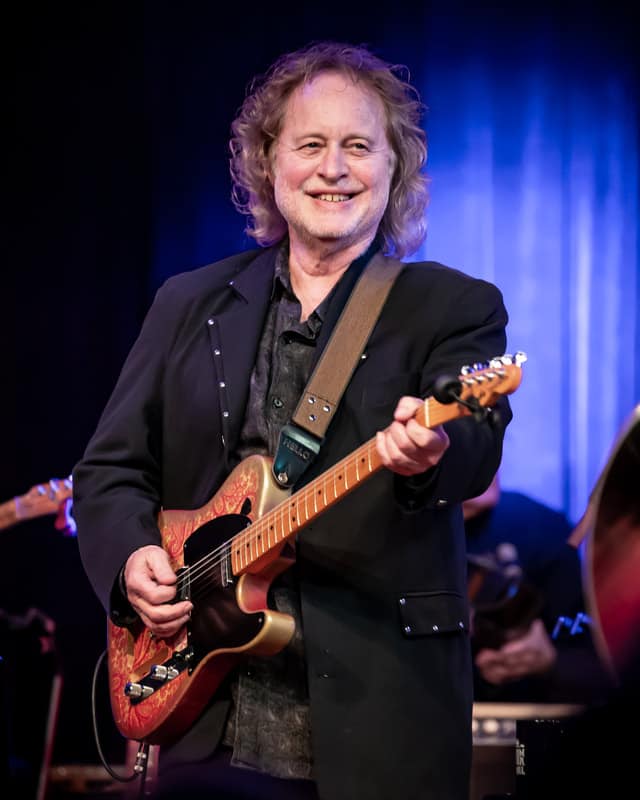
Steve Ripley: 1950-2019
Oklahoma Music Legend, Owner of The Church Studio, member of The Tractors
It’s comforting to know that after you’re gone, a part of you will remain. Steve Ripley left behind an artistic legacy that will have an impact long after his passing. Many people were impacted by his compassion and ingenuity. Red Dirt and the Tulsa Sound, two new Oklahoma music genres, were aided in creation by Ripley. He owned The Church Studio in Tulsa for almost two decades where he produced many artists as well as his own band The Tractors. They recorded the song Baby Likes to Rock It on their self-titled first album, The Tractors. It became the highest selling album ever recorded in Oklahoma. He worked with Leon Russell, Bob Dylan,
and Eddie Van Halen, who were all in some ways fans and collaborators. Legendary musicians have embraced Ripley’s musical creation, the Ripley Stereo Guitar. Famous for the love of his family, he encouraged others to have and love their own. Future generations will be inspired by his work because of his dedication to preserving Oklahoma’s musical heritage and culture. Steve Ripley did us a favor. A big favor. He was paying it forward.
Steve Ripley is a genuine Oklahoma icon. Over the coming months, you’ll be able to read about Ripley’s early years, his tenure at The Church Studio, his time with his band The Tractors, and his work to preserve Oklahoma music before his passing in 2019. This is done to honor Ripley and his contributions to Oklahoma music and The Church Studio.
Part 1: Ripley’s Red Dirt Roots
Steve Ripley was born Jan 1, 1950, in Boise, Idaho. He grew up on the family’s Oklahoma Land Run homestead near Pawnee, Oklahoma. He called the parcel he and his family moved back to simply The Farm. Ripley was born into a family of music fans who enjoyed dancing and going to see bands like Bob Wills and the Texas Playboys. He told Oklahoma historian John Earling, in Voices of Oklahoma, “The Ripleys were nuts for music, though they didn’t play it.” One of his earliest memories, around age three or four, was trying to put a 78 record on the record player to listen to Bob Wills’ Stay All Night, Stay A Little Longer. [Then] “one of Uncle Elmer’s daughters, one of my cousins, Mary Irene, in ’54, fell in love and went nuts. I mean, she just went nuts for Elvis. So that big 78 thing of Bob Wills and Hank Williams shifted for me because of her, and the whole world, shifted to Elvis, and I’ve never recovered, I guess.”
His love of music, especially country and Elvis, inspired him to pick up the guitar around the age of seven. Ripley played in bands in junior high and high school in Glencoe, Oklahoma. In an interview in Swampland, Steve said “Back then, you did play all the time, everybody was in a band.
I went through the Cobras – I can’t remember all of them. I was in a band for a long time called The Innkeepers with Steve Irby and Dow Simank.” He discovered Woody Guthrie, and a bit later, Bob Dylan. He cut his first recording in junior high school at Gene Sullivan’s Hi Fi Recording Studio in Oklahoma City in 1963. Sullivan owned Oklahoma’s first recording studio and Ripley credited Gene for teaching him about production and recording. He would save his money to just reserve time and learn from Gene. The earliest records by Leon Russell and JJ Cale were created in the same studio. Everyone flocked to the Hi Fi Recording Studio to record in the early 1960s.
Ripley moved to Stillwater to study communications at Oklahoma State University and created the group, Moses. In 1973, he founded Stillwater Sound Studio and began recording with his band. When they self-published a live album in 1974, the band chose the label name Red Dirt Records. The name was inspired by the red soil found in that part of Oklahoma. It appears to be the first time the term was used to describe local music. After Moses, Steve focused more of his attention on engineering and recording. He explained in Swampland, “Then it all sort’ve fell apart when that Journey, Foreigner, and Styx thing started, and when Kiss became the next trend, I just quit. Truthfully, I’m not knocking it; I’m just telling you I hate it.”
Ripley first heard of Leon Russell in Stillwater. He told his friend Jim Edwards in an interview in Tulsa People, “I rounded the corner in the OSU Student Union and I saw this poster for Leon Russell and Joe Cocker “Mad Dogs and Englishmen” at the Brady, or whatever it was called then — Tulsa Municipal Theater — and the show was that night, so I talked my bass player into going and we sat and watched that thing unfold and it was, of course, fabulous. Being there was more fabulous for us than you can imagine it now. I mean, Joe Cocker, the whole mass of people and dogs and kids and Ray Charles songs and all that stuff, and it all hit me that night that Leon was actually from Tulsa. Because it hit me over the head like that — it was, I think, life changing.”
“I have to say, I pursued it then and Leon was my hero, as was (J.J.) Cale, and they did that Shelter thing and I had my studio in Stillwater… that’s when all the Tulsa guys, Gordon Shryock and Glen Mitchell and Ron Getman and John Crowder — and (Gary) Busey and (David) Teegarden — came down, and some of those guys moved away from Tulsa and came to Stillwater to record in my studio and it was really a Muscle Shoals kind of thing. And here was Gordon Shryock, who knew Leon (and) who worked at Leon’s Skyhill Studio (in L.A.). And
here were all these guys who were one step away from my hero — that’s my meeting of the Tulsa people.”
Ripley influenced Stillwater musicians such as Tom Skinner, Jimmy LaFave, the Red Dirt Rangers, and Bob Childers, who was affectionately known as Red Dirt’s first “poet laureate.” John Cooper of the Red Dirt Rangers recently told me over a cup of coffee, “When I first heard about Steve he was already gone from Stillwater, but local musicians – Bob Childers and Jimmy LaFave and others – use to talk about him. We kept hearing news: that he was playing for Bob Dylan, making guitars for Eddie Van Halen. He was this guy we had heard about. He was from our scene in Stillwater, and we considered him as someone who had really made it. We were inspired.” Those Stillwater musicians naturally gravitated to each and created the red dirt music scene,
“Red dirt music is deeply inspired by two musicians in particular: Bob Wills and Woody Guthrie. Its heartbeat is Stillwater, Oklahoma.” Cooper eventually met Steve and became a close friend. Later, Cooper and The Red Dirt Rangers would collaborate with Ripley to make three albums.
When Charlene Grant’s high school band from nearby Perkins, Oklahoma recorded at Stillwater Sound Studio, she met Ripley. They married in 1976 in Stillwater and had two children, Elvis (1979) and Angelene (1982). They had a tight partnership throughout their marriage. Ripley was devoted to music, but he was even more devoted to his family. Almost everything he did involved Charlene and the kids. Charlene recalls him telling other musicians to “marry and have babies.”
Ripley looked like a rock-n-roll angel but could be a bit moody and intimidating sometimes. Charlene says “he sounded gruff and that put some people off, but he was the opposite – he was the sweetest. He was very cool! Except for when he was dressed up, when he might wear black cowboy boots, he always wore red Converse sneakers and Levi’s. He was picky about the way his curly hair looked, and it had to be nice. He never smoked, drank much, or used drugs, which was unusual for someone in the music industry.” John Cooper remembers him as sometimes a bit moody, but he was always kind with a shock of wild, kind of long hair. “He had a twinkle in his eye, was amiable, and absolutely loved his family and friends.” Jim Edwards described him as “a terrific storyteller, but it was never about himself, he was simply another character in a story. He was a shy person, but once he warmed up, he was full of stories and could be the life of the party.”
After Stillwater Sound Studio closed, Ripley spent more time visiting Leon Russell’s studio in Tulsa. Charlene’s recalled that, “Steve always adored The Church Studio (at the time, it was known as Shelter Recording Company/Church Studio). As soon as he heard Leon was in Tulsa, he would drive over and stop by. In the end, Simon Miller-Mundy (who worked for Shelter) gave him permission to record there at night. That occurred during the 1975 summer, just before Shelter shut down. Mudcrutch, featuring Tom Petty, would record just after Steve. Petty and band eventually moved on to finish their recording at Leon’s studio in California.”
He and Charlene relocated to Nashville in 1976. Ripley worked on song writing and Charlene worked as a tour guide at the Country Music Hall of Fame. Times were tough and they soon returned to Tulsa where Ripley went to work for Leon Russell. Russell and his new wife Mary McCreary had just completed The Wedding Album and Ripley was the monitor mixer on tour.
The critically praised CDs Reunion for Johnnie Lee Wills (Bob Wills’ brother) in 1978 and Makin’ Music for Roy Clark and Gatemouth Brown in 1979 were produced by Ripley when he began working for the Jim Halsey Company. The latter contained the song Four O’clock in the Morning by Charlene and Steve Ripley. Ripley’s daughter, Angelene Ripley-Wright, recently told me a story about that song. “My parents were inseparable, one unit, always working together. At the time he was getting home late every night and my mom’s response was ‘four o’clock in the morning, three nights in a row,’ so he put those lines in the song and gave her credit. He always gave credit to everyone involved.”
In 1979 Ripley and Charlene moved to Burbank where he took on a job as studio engineer at Paradise Records and worked as Leon Russell’s personal engineer. While in California, Ripley took on other projects and contributed to JJ Cale’s Shades (1980), #8, (1983), and New Grass Revival’s Leon Russell & New Grass Revival – The Live Album, 1981. He worked with the Tulsa-born power pop group 20/20, who released the album Sex Trap in 1982.
Ripley ended up playing guitar on Bob Dylan’s Shot of Love record and joining the accompanying tour thanks to another Oklahoman, drummer Jim Keltner. The final album of a trilogy of Christian albums by Dylan, Shot of Love was released in 1981 by Columbia Records. The arrangements have more of a rock than a gospel foundation. The album includes one of Dylan’s most renowned recordings, the song Every Grain of Sand. Tulsans Jim Keltner and Carl Pickhardt, as well as Benmont Tench and Ringo Starr, are among the other musicians on the album.
Ripley was “always driven, frequently getting up at 3 or 4 am to work,” according to Charlene. He was also “scary clever,” creating complex designs for guitars, circuits, and other audio engineering equipment. His “stereo guitar” was created in 1982. Ripley’s son, Elvis Ripley, was a young child when they were in California. He told me about his memories of that time, “Immediately after touring with Dylan, he starts making guitars for himself as an experiment, then for other people. We lived in a house in an avocado orchard and deep into the property he converted an old building into a guitar shop. Dad cleaned up the building and constructed a workbench and guitar storage. Most people who make guitars are luthiers (the business of making beautifully designed instruments), but his were generic – just the raw wood on the neck
and the body. He liked the core essence of it, and it was different from everyone else. He would sand them or used linseed oil on them. But the guts were custom. I remember the smell of solder, him hunched over, wiring the parts and electronics together.”

The Kramer Boys with Eddie Van Halen Ed got Steve a deal with Kramer Guitars to make a version of the Ripley Guitar
The Stereo Guitar was favored by Ry Cooder, Dweezil Zappa, John Hiatt, Jimmy Buffet, and J.J. Cale. The guitarist had total control over how each string was mixed thanks to the guitar. Dweezil Zappa wrote about his stereo guitar on his own website, “it was a rare and cool guitar, a complex guitar with 16 pin cables that interfaced with a 2 rack space ‘brain.’ It was very complex, and Edward Van Halen nicknamed it the ‘Super Pluto Guitar.’ There were only three ever built and Eddie, Ry and myself owned them.” Additionally, Ripley created several instruments for Ry Cooder to use in movie soundtracks.
Eddie Van Halen became a devoted fan and featured a stereo guitar on the song Top Jimmy from their 1984 album. Ripley was the name of an instrumental song that Eddie Van Halen recorded for the 1984 Cameron Crowe scripted movie The Wild Life. Eddie played it on a Ripley Guitar. Later, in 2012, Van Halen recorded Blood and Fire on the album A Different Kind of Truth. The song is based on the Ripley instrumental from 1984. In photographs, Van Halen often had a Ripley Guitar in his hand.
Ripley and Van Halen developed a very close friendship. After his passing, Van Halen was quoted in the Ultimate Classic Rock website: “For more than 35 years I’ve been fortunate to call Steve Ripley one of my true friends. Steve is many things. Part genius, part musician, part
inventor and many other great things, but my favorite thing about Steve is the wonderful, kind, humble human being he is and always will be. I love Steve with all my heart and am proud to know him.” Elvis Ripley, remembers “I was pretty young, but I remember going to Ed’s house in the mountains and seeing his Lamborghinis and going to his studio.” Charlene revealed to me that Eddie Van Halen provided financial assistance to the them while they struggled to relocate back to Oklahoma.
Ripley made sure his loved ones were always by his side when he was making music and developing guitars. Angelene Ripley-Wright, his daughter, shared some of her memories of that time with me, “I was born in California in the Dylan time and had a great little life with my family. I didn’t know anyone was a big deal – Bob Dylan, I didn’t know about any of that. I had a stable, normal life. It wasn’t until I was an adult that I found out Eddie Van Halen was a big deal. I didn’t really know him, but he was always on the other end of the phone with Dad, and I always heard them telling each other ‘I love you.’ Later we saw him at a concert in Tulsa and went backstage. They were hugging. Their relationship was unexpected, best buds. Dad kept all that stuff private though. He wouldn’t talk about Dylan, Eddie, and other famous people. He never betrayed any of their trust. I felt like we were the most important thing – all the other stuff he’d say that’s not important like my kids. It gave me a lot of confidence.”
Late in 1986 they learned that Ripley’s mother was not well, she had cancer. He moved the family to Tulsa to be closer to her. In 1987 they purchased Leon Russell’s old studio.
Jim Edward’s story of Ripley buying the studio is a bit amusing. With his friend, the musician Michael Garrett, he co-wrote some tunes back in his younger years. Even though Jim was only 23 years old he had the moxie and naivete to phone Ripley and ask him to record the songs.
Surprisingly, Ripley did. They lost communication with each other for several years. Then, in 1986, Jim ran into Ripley in a restaurant in Tulsa and informed him that Leon’s former studio was up for sale. Jim was seeking investors to purchase it. “Let me know when you decide not to purchase it,” Ripley said in response. Jim says “A week later, I understood that I am not a studio whiz and that it would be the ideal project for him. Steve had his investor lined up within a week or two, and they purchased it.” Ripley gave Jim some recording time in the new studio as a gesture of goodwill.
He officially named it The Church Studio, a nod to Leon Russell’s old Shelter/Church days. It was the beginning of a new musical journey for him as he continued to discover new artists and create his extraordinary new band, The Tractors.
The Santa Claus Boogie
This video makes me imagine what it was like to be in the studio when The Tractors were jamming. It’s high energy, full of Santa Clauses and dancing uncles, great close ups of all the band members… it’s just a jumping little jukebox full of joy. Watch the official music video for “The Santa Claus Boogie” by The Tractors Listen to The Tractors: https://TheTractors.lnk.to/listenYD
Website: https://TheTractors.lnk.to/followWI
Spotify: https://TheTractors.lnk.to/followSI
The Big Night
℗ Boy Rocking Records
Released on: 2002-10-0
Steve Ripley is joined on The Tractors’ “The Big Night” by the likes of Elvis cohorts Scotty Moore and the Jordanaires and the brothers Hanson, Debbie Campbell, Fats Kaplan, Jim Karstein, Glen Mitchell, Casey Van Beek, Tom Tripplehorn, Walt Richmond, and a rollicking crew of friends and family Tulsa-based character actor and artist, Gailard Sartain, did the artwork on the cover.
Tractors: https://TheTractors.lnk.to/listenYD
Website: https://TheTractors.lnk.to/followWI
To find out more about the exciting new phase of Steve Ripley’s career at The Church Studio, please follow our blog.


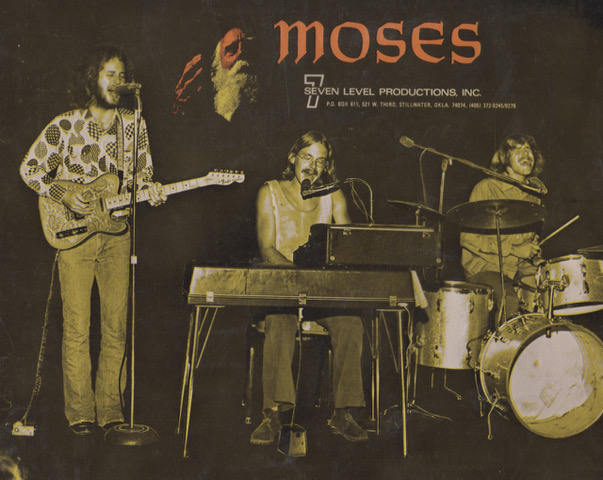
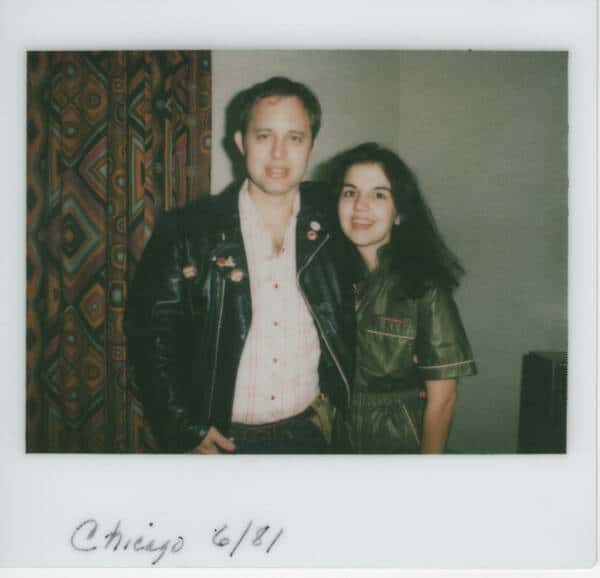
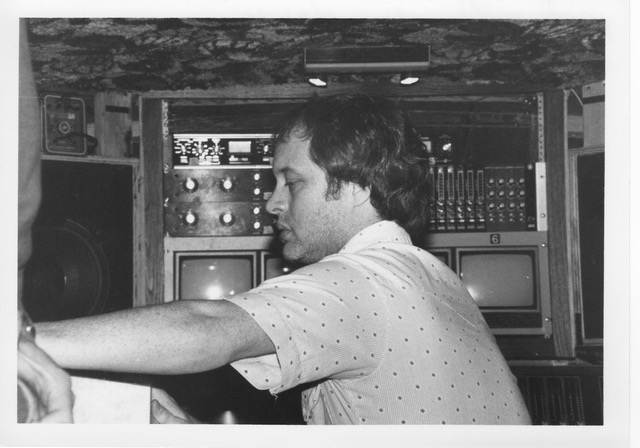
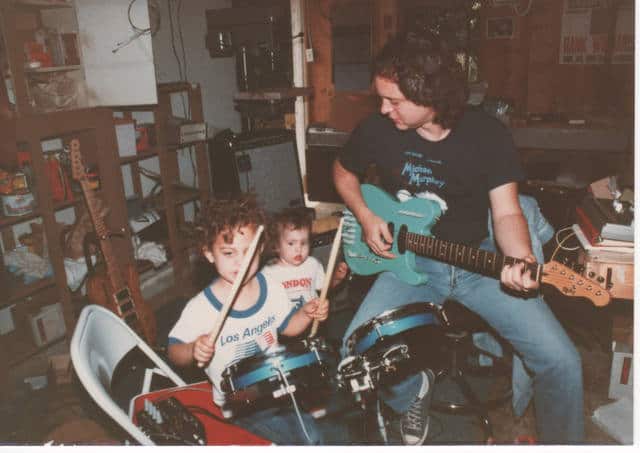
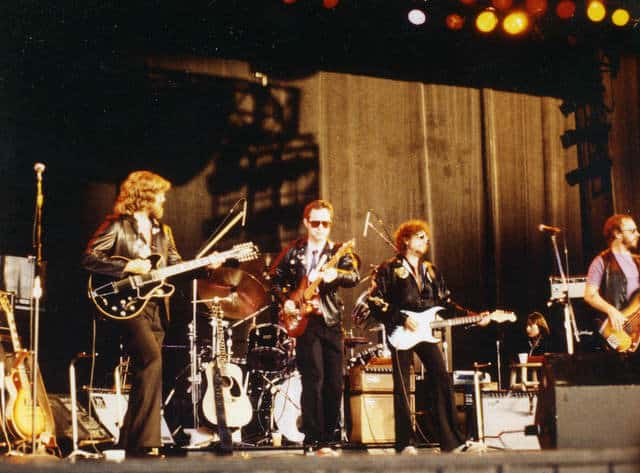
Deborah…You Did A Fabulous Job Telling The Great Story of STEVE RIPLEY ‘S Journey Through Life..I Appreciate The Time Effort You Put Into This Project ..Cannot Wait For Part 2&3..😎🎩🎸….Johnny MCDONNELL
Thank you for sharing stories of Steve. Loved him mightily.
Great read, Deborah, couldn’t quit till I finished it.
Great story on Steve Ripley.
John Earling’s Voices Of Oklahoma was also an excellent story.
Thanks for the good read Deborah. That was very interesting. Enjoyed it very much.
This article makes me want to put Oklahoma and The Church Studio on my bucket list. Seriously. This is fascinating! You really make it come alive, Deborah. Steve sounds like an incredibly sweet and good human being. And the scope of the Oklahoma music scene is amazing. Thank you for a very enjoyable journey into the past. I look forward to someday seeing the current Studio and soaking up that magic in person.